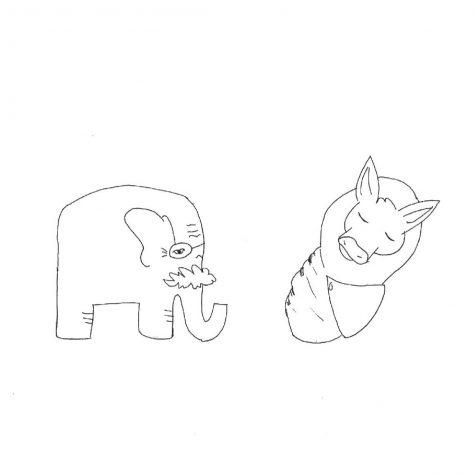The kids are (not) all (politically) right, and they’re going to stay that way
December 15, 2020
In recent years, a stark political divide has come to define American culture, a concept only further revealed by this past presidential election. Joe Biden defeated the Republican incumbent Donald Trump by a wide margin of 306-232 electoral votes, the same by which Trump won in 2016. This flip could appear to suggest that Americans are somehow close ideologically, simply trading one party for another, but this assumption could not be further from the truth. We are perched on the ends of a political seesaw: Democrats on one side, Republicans on the other. If current trends hold, the Republicans face demolition by the weight of a new generation of voters as they turn historically red states like Georgia and North Carolina into battleground states — and the party may not survive.
Over time, the Republican Party’s views have shifted to favor more conservative social beliefs, such as the pro-life movement, as well as more severe restrictions on immigration. The Democratic Party has courted younger voters with a more inclusive social agenda such as support for universal healthcare, climate change initiatives and student loan forgiveness.
Norm Orstein, a resident political scholar at the American Enterprise Institute for Public Policy Research, has observed the Republican Party for 50 years and has witnessed the party’s transformation over the last 20 years.
“Few of the dozens of Republicans in high office I have known and admired over five decades … would be represented in the Republican Party of today,” Orstein said in an interview for The Atlantic.
This shift isn’t attracting young voters, who hold the future of the party in their hands. It began with the election of George Bush in 2000 when voters aged 18 to 29 deviated over 15 points to the left from the overall electorate. This trend has continued in every presidential election since, according to a study by the Roper Center For Public Opinion Research. In the 2020 election, young voters backed Joe Biden by 24 points, while Biden only won by 3.9 percent of the popular vote, according to Washington Post exit polls.

The Republican Party does not have an appealing stance on issues such as climate change and student loan forgiveness, subjects that impact young people the most. Unless the party decides to radically change its platform, young voters aren’t likely to respond favorably. Without the youth of America, where will the party be in 30 years? Not on the ballot, if they keep up like this.
Yes, young people have always tended to lean more liberal in their politics. It’s easy to assume that Millennials and Generation Z will get more conservative as they age, as Fox News anchors like to falsely attribute to Winston Churchill. The saying goes, “If you’re not a liberal when you’re 25, you have no heart. If you’re not a conservative by the time you’re 35, you have no brain.” However, a University of Nebraska-Lincoln study found that 75 percent of their subjects’ political views remained stable over the course of 32 years, from ages 18 to 50.
David Faris, a professor of politics at Roosevelt University and author of the book “The Kids Are All Left: How Young Voters Will Unite America,” is among the experts who agree with these results.
“[Young voters] aren’t being driven left by their college professors, but rather by the Republican Party’s spectacular record of policy failure in the 21st century, and getting rid of Trump won’t be nearly enough to win them back,” Faris said in an article by the Washington Post.
In the past, young voters may have voted more on the liberal side due to their collegiate environment or lack of “real-world experience,” but young people voting Democrat today are motivated by years of failure by Republican politicians. This aversion stems from something less fleeting than a four-year university experience. It’s a lifetime of buildup and strife, and young people are now taking their anger to the voting booth when they turn 18. Even if the Republican Party manages to sever themselves from some of the most socially conservative ideologies that have infected the party over the last two decades, it will take years ― perhaps another generation ― to undo the damage.
Republican politicians know this. Their confirmation of Justice Amy Coney Barrett less than two weeks before the general election despite their 11-month blockade on the vote on Merrick Garland in 2016 proves it. By locking in a conservative majority in the Supreme Court for the foreseeable future, they can secure an agenda that they know voters will not support as the years go on. The Republican Party is clinging to the last bit of power they have, and it’s painfully obvious.
The Republican Party needs an overhaul. They need a new vision that appeals to younger voters and they need new, younger leaders who can bring it to life ― or they can expect to be catapulted off the seesaw of American politics.







